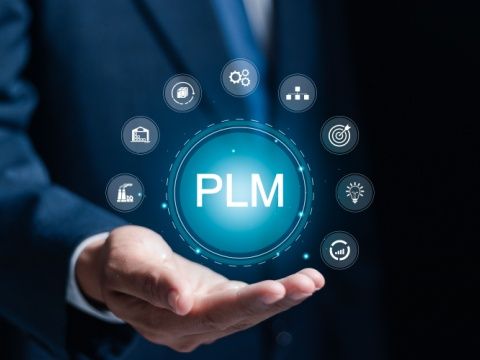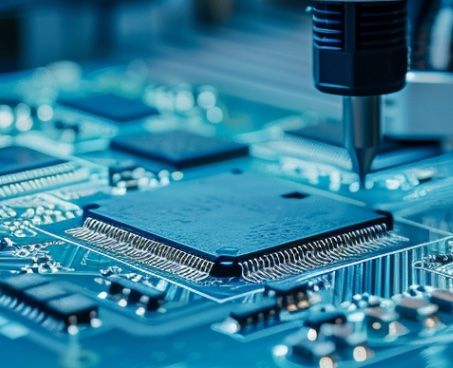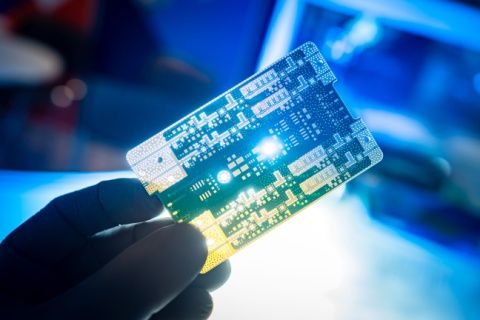Streamline, Collaborate, and Innovate with PLM in PCB

Each year that goes by, the electronics industry becomes increasingly saturated; more companies pop up, new products arrive, and behind each and every one lies the humble printed circuit board—the silent powerhouse that allows electrical currents to flow between attached components to bring devices to life. Time-to-market and product complexity are paramount in this burgeoning sector, and PCB engineers are under pressure to streamline their design and manufacturing processes to meet demand and achieve success.
It’s tough. But that’s where product lifecycle management (PLM) comes in as a solution.
PLM represents a strategic business approach that focuses heavily on interconnectedness between previously disparate silos of people, data, and processes throughout a product’s life cycle. Its implementation, which comes with surmountable challenges, can help organizations improve in a whole host of ways, but especially in efficiency, collaboration, and facilitating the drive for ongoing innovation.
Challenges of Traditional PCB Design and Manufacturing
Can PLM address inherent challenges in PCB design and manufacturing?
- Data silos and version control issues: Design data often resides in various software programs and file formats, which makes it difficult to maintain a single source of truth. Version control can become a nightmare, leading to confusion, errors, and wasted time resolving discrepancies.
- Communication bottlenecks: Communication between design teams, engineers, and manufacturers often rely on emails, calls, and manual data transfer. This fragmented approach can lead to delays, miscommunication, and missed deadlines, negatively affecting the bottom line.
- Component obsolescence and risk management: Electronic components have finite lifespans. Traditional methods for tracking obsolescence can be cumbersome and reactive, potentially leading to costly production delays and redesign efforts.
- Limited Design for Manufacturability (DFM) integration: Traditionally, DFM considerations were often an afterthought, leading to costly design revisions and production delays.

These challenges can hinder companies trying to compete at the top level, where the development of new, improved electronics is of the utmost importance. Read on to find out how PLM tackles these issues and paves the way to a more collaborative and innovative PCB design and manufacturing process.
Overcoming Challenges: How PLM Streamlines PCB Design and Manufacturing
PLM is essentially a powerful bridge that connects the previously isolated aspects of PCB design and manufacturing. Here’s how it takes on the challenges outlined earlier:
- Centralized data management: A PLM system establishes a single source of truth for all PCB design data—schematics, layouts, Bill of Materials (BOMs), and other operation-essential information resides in a central repository that all authorized users organization-wide can access. Version control becomes automated, eliminating wasted time spent reconciling discrepancies.
- Enhanced collaboration: The way that PLM facilitates communication and collaboration between design teams, engineers, and manufacturers is manifold. The real gem, however, is real-time data access and integrated communication tools that help teams work effectively and efficiently together. For example, design engineers can receive instant feedback from manufacturing partners on potential manufacturability issues, allowing for faster design iterations and improved product quality.
- Proactive obsolescence management: PLM systems can integrate with component databases to provide real-time alerts on end-of-life (EOL) or part obsolescence risks, which helps designers to proactively source alternative components when issues arise without expensive production delays or redesign efforts.
- Integrated Design for Manufacturability (DFM): Within your system, PLM can integrate DFM tools directly into the design process. With that, designers can instantly assess the manufacturability of their designs to identify potential issues like component placement, routing complexity, or testability concerns early on rather than the manufacturing team finding the problem later. This is yet another mitigation of costly design revisions and production delays.

Statistics That Showcase the Impact of PLM
Of course, you shouldn’t just take our word for it. Here are some interesting stats about PLM’s impact on the electronics manufacturing process from IBM:
- Over an eight-year period, after implementing PLM, IBM managed to reduce the number of abandoned projects from 25% to 1%.
- At the same time, IBM successfully increased part reuse, more than halving the number of unique components necessary for manufacturing and turning an $8 billion loss into $8.4 billion profit.
How PLM Fuels Innovation in PCB Design
While streamlining processes and improving collaboration are undeniable benefits, PLM isn’t a system that companies should invest in purely for efficiency purposes. It is also able to bolster innovation across the creation process.
- Improved design reuse: By facilitating the creation and management of standardized design libraries, PLM helps engineers to easily access and reuse proven components and layouts to speed up the design process and free up valuable time for more creative considerations. As shown in the IBM example, this leads to notable cost-savings.
- Enhanced change management: PLM streamlines the change management process, which allows for faster and more efficient design iteration. Teams can experiment with new ideas, track changes without hindrance, and revert to previous versions if necessary. Why is that beneficial? It builds a sense of experimentation and risk-taking among teams, which is crucial for driving innovation.
- Early problem identification and resolution: Real-time data visibility across the design and manufacturing process enables early identification of potential problems. Issues like manufacturability concerns or component compatibility can be addressed proactively for faster problem-solving and improved design quality. This frees up resources and allows teams to focus on the development of innovative features and functionalities.
- Knowledge capture and sharing: PLM serves as a central repository for capturing and sharing valuable knowledge across teams. Design engineers can access best practices, problem-solving techniques, and past project data, which gradually accelerates learning and continuous improvement.

How Could That Work in Practice?
Imagine a company developing a new wearable device. The design team would use the PLM system’s design reuse capabilities to leverage components and layouts from a previously successful product to jumpstart the design process. At that point, real-time collaboration features help the designers communicate with manufacturing partners, who identify a potential soldering issue during the early design phase. The design team quickly addresses the concern, avoiding costly delays down the line. Finally, the team leverages the centralized knowledge base to learn from past design challenges and troubleshoot potential problems efficiently.
Through the implementation of PLM, organizations have the opportunity to overcome inherent challenges that have long-plagued PCB design and manufacturing processes. It’s a system that facilitates a collaborative environment, breaks down data silos, and makes sure stakeholders work from a single source of truth to streamline workflows and reduce errors or time wasted. In a competitive electronics industry, where time-to-market and product complexity are top targets, that’s a boon for companies that want to bring innovative products to market faster. A clear advantage—one that you should consider if your organization intends to secure its place at the forefront of technological advancement.











